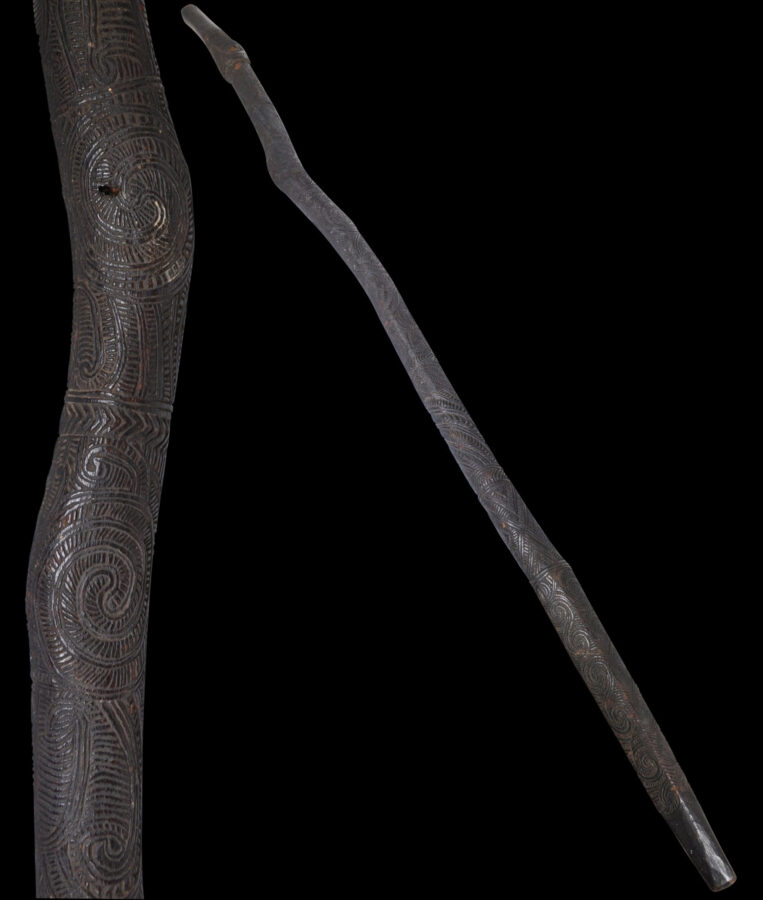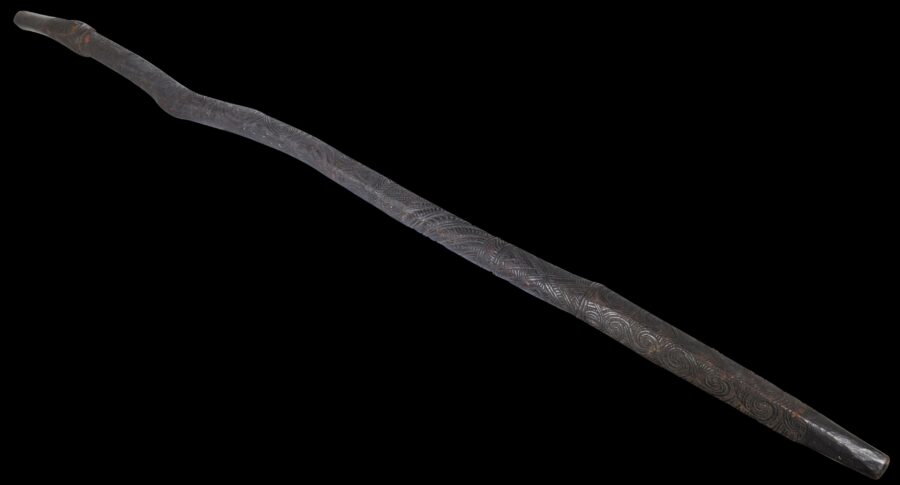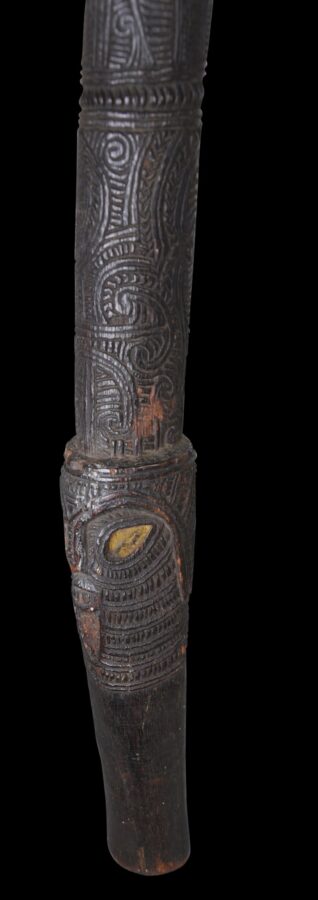This carved wooden staff (also sometimes referred to as a walking stick but probably more a symbol of seniority or authority) from the Maori people of New Zealand comprises a natural tree branch that has been shaped and then carved all over. The natural twists of the branch have been allowed to remain. An example of a Maori staff that also seems to follow the natural form of a tree branch is in the collection of the British Museum and illustrated in Starzecka et al (2010, pl. 105.) The Museum example entered its collection in 1870.
The base of the staff is decorated with a wheku or ancestor figure face. Cavities for the eyes and mouth suggest that these once were filled with haliotis shell of maybe whale bone.
The rest of the staff is finely carved with various bands of rauponga motifs, panako or fern motifs, spirals, and so on.
The staff has a fine, dark, glossy patina. There is some old termite loss to one section, but the overall structure is solid and stable.
References
Starzecka, D. C., R. Neich & M. Pendergrast, The Maori Collections of the British Museum, British Museum Press, 2010.















